John Hurrell – 7 March, 2010
Cleland has put together here a clever and unusual show that illuminates not so much specific examples of collecting as its relationship to maintaining types of certain art practice, while commenting on collecting's general ordering principles and common administrative procedures.
Auckland
Unpacking My Library
Dan Arps, Xin Cheng, Bill Culbert, The Estate of L. Budd, Peter Madden, Daniel Malone, Elizabeth McAlpine, Neil Pardington and Ann Shelton.
Curated by Stephen Cleland
13 February - 11 April 2010
This show spirals around the distinction between a library and a collection, for although the two are obviously very different, in many people’s minds they often end up becoming interchangeable. Especially if you believe that objects and the sensations they provide can have their codes read as if they were newly opened books.
Is a library something like a wine cellar (the objects contained use-up-able eventually) or is it more like a wardrobe, a source of references in your conversation that you put on like wearable tactile garments? The roles of favourite sensations, reliable ideas, and certain zones in between - can all these be noted and stored to be savoured again in the future?
To introduce this theme in-house curator Stephen Cleland has had printed on a poster a beautiful passage from the well known essay that provides this show’s title. Written by Walter Benjamin, the patron saint of, indeed the founder of, art theory, and published first in 1931, it discusses the pleasure of building up a collection through pursuing individual items. Much like say, stories about the great Russian novelist Vladimir Nabokov running through country fields with his net, chasing butterflies - a lifetime obssession.
Cleland’s show though is only partially about books. Much of it is about catalogues, taxonomies, and how we classify things. That aspect pertains more to another great figure in theory, Michel Foucault than to Walter Benjamin, and Foucault’s amusement (as discussed in his preface to The Order of Things) at Jorge Luis Borges’ account of a particular Chinese Encyclopaedia where animals are classified by being: (a) property of the Emperor, (b) embalmed, (c) tame, (d) suckling pigs, (e) sirens, (f) fabulous, (g) stray dogs, (h) included in the present classification, (i) frenzied, (j) innumerable, (k) drawn with a very fine camelhair brush, (l) et cetera (m) recently the cause of a broken water pitcher, (n) similar from a long way off to a row of flies.
Of the nine artists here only two specifically use books: Ann Shelton and Xin Cheng. Room stalwart Cheng also presented a library in last year’s Article 27 show in North Shore curated by Richard Dale. Her space this time in Te Tuhi is bigger and less cell-like, with a large square plywood table and four boxlike plywood chairs. On the table are nineteen hardcover publications, many from local libraries. Most are about architecture, design, clothing and cooking.
This sort of exhibition promotes the notion of art being research, so it invites gallery visitors to dig out information and become artists themselves. For example I have personally decided to seek out certain books at various libraries after they have been returned. Four in particular are especially appealing: one, The Architect, The Cook and Good Taste connects building with cooking; another looks at chair designer Rolf Fehlbaum and how chairs are conceived; a third presents coloured photos by Albert Kahn taken around the world during the second decade of last century; and a fourth examines Scandinavian knitting patterns.
The theme of books continues in five small video screens from Ann Shelton set in a line on a long wall. They feature her continued fascination with Frederick Butler, whose archive of thousands of cards and books (many of which are old novels he used as scrapbooks for local newspaper cuttings) are kept in the New Plymouth public library. Her nine videos show the pages of volumes left out of the ‘spinal’ photographs but included here, turning through each volume one at a time, and revealing scribbled annotations, lists, dates, charts, cartoons, headings and more. They, especially the clippings, are very hard to read but they attempt to whet your appetite.
It is difficult to pin down the value (if any) of Butler’s unusual obsession, and if he fits as an artist (he probably doesn’t because he didn’t think of himself as such) or as a social historian (again probably not, for in this field he may have done more damage than good - for the newspapers would be more useful intact.) Shelton’s earlier well known series of life-sized photos of the spines of Butler’s archive, as seen on the library storage shelves, is amazing, but these page-turning videos ram home a connection with Borges’ Chinese encyclopaedia. The headings of four consecutive pages in one notebook on medical conditions go as: pimples; prunes; potassium broth; potatoes. There may be a coherent logic here, to do perhaps with bio-chemistry, but it is not very clear.
The three Neil Pardington Lambda/C-prints displayed come from the basements of Te Papa, Auckland Museum and the Hocken library. These very detailed images show items of mammal and marine life, rolled up textiles stored on steel rods, and a box of catalogue cards.
How does one ‘read’ these? Well the long triptych from Te Papa reveals masses of mounted deer heads that most likely will never be displayed, and what seems to be a killer whale skull that probably will. Auckland Museum’s rolled up rugs are stored slightly over on the left hand side of the racks bearing horizontal bars - perhaps a vague comment on some bias of sorts, and the Otago cupboard of filing cards with labelled catalogue drawers makes a gorgeous grid that obscures (but potentially confirms) the rationale of the enclosed register for the art collection.
The logic of organising such inventories is tested to opposite extremes by British artist Elizabeth McAlpine and The Estate of L. Budd. McAlpine continually collects postcards of Big Ben and the Houses of Parliament - of different periods and sizes. To present them on a wall she uses a huge 12 x 60 matrix of 720 plastic pockets. She has about a third of that number of cards in total.
The system she uses to position each card in the grid for display depends on the time shown on the clock dial: vertical co-ordinates equal hours; horizontal equal minutes - so you place the card where they cross. Day and night are blended, and McAlpine plays on the fact that in some images the time is indecipherable, or one hand at least is hidden by shadow. Therefore her system, which looks impressive at first glance, is not totally reliable, for she has to make arbitrary decisions sometimes. Some cards are repeated three times.
The contribution of The Estate of L. Budd to Cleland’s exhibition is to turn one of the gallery rooms into a little warehouse, bringing in for this show (but not ‘displayed’) various works made by that artist stored in different locations scattered around the country. On the temporary shelves we see bulky storage boxes daubed in characteristic grey with scribbled crayon, heaters, turntables, suit-cases, cabinets, and sound gear. And various rolled up awnings and paintings lean against an end wall.
A catalogue for The Estate’s ‘Extant Works‘ hangs off one shelf, and its pages are also pinned to one wall. An ambiguous blue taped line runs between the shelving and the space where the viewers enter, half suggesting they go no further. A surveillance monitor watches from one corner.
More importantly, The Estate of L. Budd monitors itself. Problems of authenticity are adjudicated where collectors are invited to submit ‘applications of registration and authentication’ for possible Budd works not yet listed. The Estate shows caution in instigating such bureaucratic procedures, exhibiting samples of blue Approved or Denied stamps and being forever vigilant, in case dubious ‘L. Budd’ works appear in the future - possible forgeries attempted maybe by P. Mule, Arthur Craig and Sons, Blanche Readymade, et al. and others.
Daniel Malone’s work is a catalogue attempted by memory alone, listing all the personal possessions (including cardboard rubbish he refused to discard) that he left behind when he moved to Poland, where he now lives, and which made up a Gambia Castle exhibition he sold to the Chartwell Collection.
The recounted, shorter list was written on a long wall in Paintstik by an assistant using a ‘tagger’ script with upper case printing and vertical bars through S’s and O’s. It vaguely relates to Douglas Gordon’s list on a wall of everybody he has ever met since 1990 that he can remember. Malone’s attempted inventory, with its graffiti form of presentation, seems out of place within a municipal gallery where it looks compromised. It would make a far more interesting project if it were ‘defacing’ Te Tuhi’s outer walls and genuinely drawing on the urban politics of the text ‘font’.
Eight freestanding sculptures by Dan Arps fill one small gallery, and demonstrate the merits of recycling elements from disparate exhibitions, scattered in time and place, to make something new. Some aspects of this show refer to Arps’ TWNCAA entry in Hamilton for 2005 (Creation Myth), others to Telecom Prospect in Wellington a pinch later, and others still to a Gambia Castle show held last year.
Arps’ sculptures use office swivel stools, bookcases, and old clothing dressers as plinths for hybrid versions of kitsch ceramic garden ornaments, and are very entertaining. They revel in messy and dribbly sculptural processes, with say, bits of paper decals on desks alongside bits of cardboard Buckminster Fuller models or resin/ceramic goblins or toadstools.
This is a restrained show for Arps, one that is oddly elegant with its uncluttered calculated placements. It is the highlight of the nine Te Tuhi exhibitions, a sort of ‘Dan Arps’ Greatest Hits’ with a surprising accessibility.
Using a darkened annex and revolving carousel of eighty slides with a translucent wall, Peter Madden presents a set of installations and collages that are tightly connected as a sample of his practice. The shots are taken from a variety of positions and display his usual subject matter of exotic tropical wildlife, Southeast Asian Gods, hands and expressive facial portraits. Like Arps (and often Budd and Malone) there is an interest in recycling forms that can subvert standard cataloguing procedure and which perhaps drives registrars worried about provenance of ingredients frantic. With Madden, there are so many parts to each installation that one is overwhelmed by numerical plenitude, a plethora of (usually small) components to be listed and documented.
Bill Culbert’s double-row of sixteen black and white photographs butted together provides a good inventory of his visual interests and modes of thinking. In this sampler we see a number of approaches to light’s effect on surfaces - or lack of, as darkness. There is behind, on top, emitting from within, and through transparent layers. Then there is the visual punning: jokes about fake table and chair legs, or concave pot surfaces and convex bulbs. These square images are like chapter headings in a book, or subfolders of files within a larger computer folder for research - guides to thematic approaches that are part of an artist’s brand; unpacked slices of their oeuvre.
Cleland has put together here a clever and unusual show that illuminates not so much specific examples of collecting as its relationship to maintaining types of certain art practice, while commenting on collecting’s general ordering principles and common administrative procedures.
In descending order the images are of works by Xin Cheng, Ann Shelton, Neil Pardington, Elizabeth McAlpine, The Estate of L. Budd, Daniel Malone, Dan Arps, Peter Madden and Bill Culbert.
Recent Comments
John Hurrell
Here is an excellent article from Rachel Ashby and Vanessa Crofskey. http://pantograph-punch.com/post/more-than-books. Here also is an interview with the Vice ...
John Hurrell
Here is an article about the alarming, proposed closure of the Elam fine arts library. https://www.noted.co.nz/currently/auckland-issues/a-startling-blow-for-auckland-s-elam-art-students/
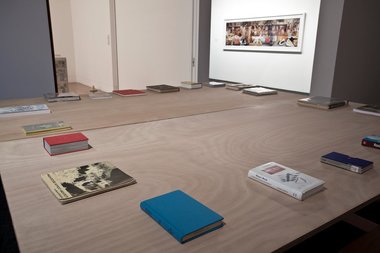
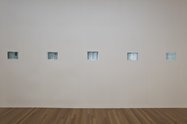
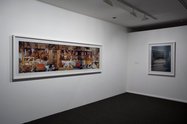
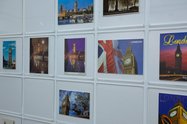
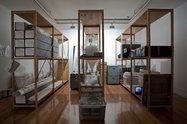
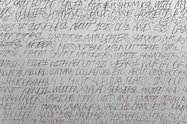
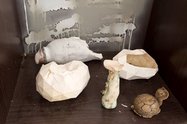

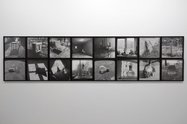
 Two Rooms presents a program of residencies and projects
Two Rooms presents a program of residencies and projects Advertising in this column
Advertising in this column



This Discussion has 2 comments.
Comment
John Hurrell, 11:31 p.m. 22 April, 2018 #
Here is an article about the alarming, proposed closure of the Elam fine arts library.
https://www.noted.co.nz/currently/auckland-issues/a-startling-blow-for-auckland-s-elam-art-students/
John Hurrell, 8:49 a.m. 2 May, 2018 #
Here is an excellent article from Rachel Ashby and Vanessa Crofskey.
http://pantograph-punch.com/post/more-than-books.
Here also is an interview with the Vice Chancellor: https://www.nzherald.co.nz/nz/news/article.cfm?c_id=1&objectid=12041896.
I think the Students Association should get a legal contract to protect the position of specialist librarians, to ensure students have quick and easy access to all books in storage. It is important that their availability is effortless.
Participate
Register to Participate.
Sign in
Sign in to an existing account.